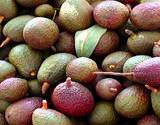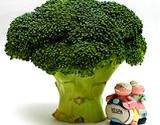|
Grandma's Digestive Enzymes Guide
|
 |  |  |
The body's ability to produce digestive enzymes, as we grow older, decreases. At the same time malabsorption of nutrients, tissue breakdown, and chronic health condition increase. Taking enzyme supplements can help to ensure that you continue to get full nutritional value from your foods. Enzyme supplementation is vital for the elderly.
Enzymes are available over the counter in tablet, capsule, powder, and liquid forms. They may be sold in combination with each other or as separate items. Some enzyme products also contain garlic to help digestion.
For maximum benefit, any digestive enzyme supplement you choose should contain all of the major enzyme groups---amylase, protease, and lipase. Digestive enzymes should be taken after meals, unless you are eating processed and / of cooked foods, in which case it is best to take them during the meal.
You can make your own digestive enzymes by drying papaya seeds, placing them in a pepper grinder, and sprinkling them on your foods. These have a peppery taste.
If you take supplemental superoxide dismutase, make sure to choose a product that is enteric coated---that is coated with a protective substance that allows the SOD to pass intact through the stomach acid to be absorbed in the small intestine.
All forms of enzymes should be kept in a reasonable cool place to insure potency. Tablets and liquids can be stored in the refrigerator. However, powder and capsule forms should not be refrigerated because they are susceptible to moisture, they should be stored in a cool, dry place.
 |  |  |
Food Enzymes and Raw Food
While the body manufactures a supply of enzymes, it can also obtain enzymes from food. Unfortunately, digestive enzymes are extremely sensitive to heat. Even low to moderate heat (118 degrees or above) destroys most enzymes in food. To obtain enzymes from the diet, one must eat raw foods. Eating raw food or, alternatively, taking enzyme supplements, helps prevent depletion of the body's own enzymes and thus reduce the stress on the body.
Digestive enzymes can be found in many different foods, from both plant and animal sources. Such as:
- avocados
- papayas
- pineapples
- bananas
- mangos
- sprouts (the richest source)
Unripe papaya and pineapple are excellent sources of enzymes. The enzymes extracted from papaya and pineapple-papain and bromelain, respectively-are proteolytic enzymes.
Many fat-containing foods also supply lipase, which breaks down fats. In fact, fat in food exposed only to pancreatic lipase (the lipase produced by the body) in the intestines is not as well digested as fat that is first worked on in the stomach by food lipase. Pancreatic food fats works in a more acidic environment (the stomach). The optimal extraction of nutrients from fats depends on the work of different fat-digesting enzymes in successive stages.
Superoxide dismutase occurs naturally in a variety of food sources, including barley grass, broccoli, Brussels sprouts, cabbage, wheatgrass, and most green plants.
What are Enzymes?
The late Dr. Edward Howell, a physician and pioneer in enzyme research, called enzymes the "sparks of life." These energized protein molecules play a necessary role in virtually all of the biochemical activities that go on in the body. They are essential for digesting food, for stimulating the brain, for providing cellular energy, and for repairing all tissues, organs, and cells.
Life as we know it could not exist without the action of digestive enzymes. Even in the presence of sufficient amounts of vitamins, minerals, water, and other nutrients.
In their primary role, enzymes are catalysts-substances that accelerate and precipitate the hundreds of thousands of biochemical reactions in the body that control life's processes. If it were not for the catalytic action of enzymes, most of the reactions would take place far too slowly to sustain life.
Digestive enzymes are not consumed in the reactions they facilitate. Each enzyme has a specific function in the body that no other enzyme can fulfill. The chemical shape of each enzyme is specialized so that it can initiate a reaction only in a certain substance, or in a group of closely related chemical substances, and not in others. The substance on which an enzyme acts is called the substrate. Because there must be a different enzyme for every substrate, the body must produce a great number of different enzymes.
The Functions of Digestive Enzymes and
Metabolic Enzymes
Enzymes assist in practically all bodily functions. Digestive enzymes break down food particles for storage in the liver or muscles. The stored energy is later converted by other enzymes for use by the body when necessary.
Iron is concentrated in the blood by the action of enzymes, other enzymes in the blood help to coagulate in order to stop bleeding. Uricolytic enzymes catalyze the conversion of uric acid into urea. Respiratory enzymes facilitate the elimination of carbon dioxide from the lungs. Enzymes assist the kidneys, liver, lungs, colon, and skin in removing wastes and toxins from the body.
Enzymes also utilize the nutrients ingested by the body to construct new muscle tissue, nerve cells, bone, skin, and glandular tissue. One enzyme can take dietary phosphorus and convert into bone. Enzymes prompt the oxidation of glucose, which creates energy for the cells. Enzymes also protect the blood from dangerous waste materials by converting these substances to forms that are easily eliminated by the body.
The functions of enzymes are so many and so diverse that it would be impossible to name them all. Enzymes are often divided into two groups: digestive enzymes and metabolic enzymes.
Digestive enzymes are secreted along the gastrointestinal tract and break down foods, enabling the nutrients to be absorbed int the bloodstream for use in various bodily functions. There are three main categories of digestive enzymes: amylase, protease, and lipase. Amylase, found in saliva and in the pancreatic and intestinal juices, breaks down carbohydrates. Different types of amylase break down specific type of sugars. For example, lactase breaks down milk sugar (lactose), maltase breaks down malt sugar (maltose), and sucrose breaks down cane and beet sugar (sucrose). Protease found in the stomach juices and also in the pancreatic and intestinal juices, helps to digest protein. Lipase, found in the stomach and pancreatic juices, and also present in the fats in foods, aids in fat digestion.
Metabolic enzymes are those enzymes that catalyze the various chemical reactions within the cells, such as energy production and detoxification. All of the body's organs, tissues, and cells are run by the metabolic enzymes. They are the workers that build the body from proteins, carbohydrates and fats. Metabolic enzymes are found in the blood, organs, and tissues doing their specific set of metabolic enzymes.
Two particularly important metabolic enzymes are superoxide dismutase (SOD) and its partner, catalase, SOD is an antioxidant that protects the cells by attacking a common free radical, superoxide. Catalase breaks down hydrogen peroxide, a metabolic waste product, and liberates oxygen for the body to use.
Return from Digestive Enzymes Guide to Human Digestive System
Return to Grandma's Herbal Remedies Home





